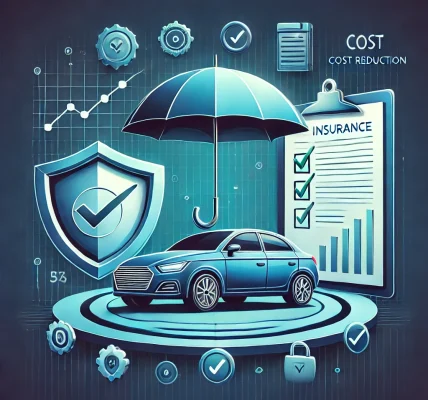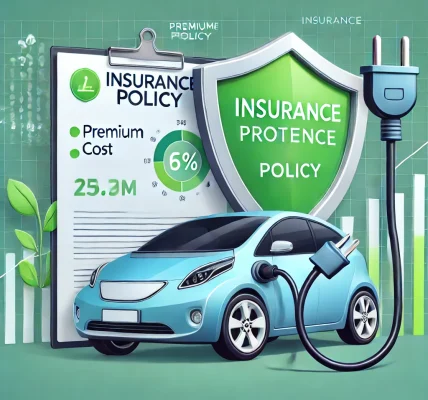Buying your first car is an exciting milestone, but with it comes the responsibility of choosing the right car insurance policy. As a first-time car owner, navigating the world of car insurance can be overwhelming due to the numerous coverage options, legal requirements, and cost factors involved. However, selecting the right policy is crucial to ensure financial protection and peace of mind while driving.
In this DIY guide, we will break down everything you need to know about car insurance for first-time buyers, helping you make an informed decision without unnecessary confusion.
1. Understanding Car Insurance Basics
Before diving into policy selection, it’s essential to understand the basic concepts of car insurance.
What is Car Insurance?
Car insurance is a contract between you and an insurance company that provides financial protection against losses due to accidents, theft, and other incidents. In exchange for paying a premium, the insurance company agrees to cover specific damages or liabilities outlined in the policy.
Why Do You Need Car Insurance?
- Legal Requirement: Most states or countries mandate car insurance to legally drive on the road.
- Financial Protection: Covers the cost of vehicle repairs, medical bills, and liabilities in case of an accident.
- Peace of Mind: Reduces the financial burden associated with unexpected car-related expenses.
2. Types of Car Insurance Coverage
Understanding different coverage options will help you choose a policy that fits your needs.
a) Liability Insurance (Mandatory in Most Regions)
- Covers bodily injury and property damage you cause to others.
- Does not cover your own vehicle damage.
- Required by law in most places.
b) Collision Coverage
- Pays for damage to your car resulting from an accident, regardless of fault.
- Recommended for new car owners to avoid costly repair bills.
c) Comprehensive Coverage
- Covers non-collision-related damages like theft, vandalism, natural disasters, and fire.
- Ideal for those who live in high-risk areas for theft or severe weather.
d) Personal Injury Protection (PIP) / Medical Payments Coverage
- Pays for medical expenses for you and your passengers, regardless of fault.
- Required in some states.
e) Uninsured/Underinsured Motorist Coverage
- Covers expenses if you are hit by a driver with little or no insurance.
- Essential in areas with a high number of uninsured drivers.
f) Gap Insurance (For New Car Owners)
- Covers the difference between your car’s loan balance and its actual cash value if totaled.
- Recommended for those financing or leasing their first car.
3. Factors That Affect Your Car Insurance Premium
Your car insurance premium is influenced by various factors. Knowing these will help you find ways to lower costs.
- Age and Driving Experience: Younger, inexperienced drivers often pay higher premiums.
- Car Make and Model: Expensive, high-performance, or newer cars typically cost more to insure.
- Location: Areas with high accident or theft rates can increase premiums.
- Driving History: A clean record leads to lower premiums, while accidents or violations increase rates.
- Credit Score: In some regions, a good credit score can result in lower premiums.
- Annual Mileage: Less driving can reduce your insurance costs.
- Coverage and Deductibles: Higher coverage limits and lower deductibles increase premiums, while higher deductibles lower them.
4. Steps to Choose the Right Car Insurance Policy
Step 1: Determine Your Coverage Needs
Assess your driving habits, car value, and financial situation to decide the right level of coverage.
Step 2: Compare Multiple Insurance Providers
Different insurers offer varying rates and coverage options. Use online comparison tools or seek quotes from multiple companies.
Step 3: Look for Discounts
Many insurers provide discounts that can help reduce costs:
- Good student discounts (for young drivers)
- Safe driver discounts
- Multi-policy discounts (bundling home and auto insurance)
- Low-mileage discounts
- Anti-theft device discounts
Step 4: Check the Insurance Company’s Reputation
- Read customer reviews and ratings.
- Look for complaints about claim processing delays.
- Ensure the company has strong financial stability.
Step 5: Choose the Right Deductible
A deductible is the amount you pay before insurance kicks in. A higher deductible lowers your premium but increases out-of-pocket costs in case of a claim.
Step 6: Understand Policy Terms and Conditions
Read the fine print carefully to avoid surprises. Clarify:
- What’s included and excluded in the coverage
- The claims process
- Policy renewal terms
Step 7: Purchase the Policy and Stay Updated
Once you choose the best policy, complete the purchase and keep your policy details accessible. Review your coverage periodically to ensure it still meets your needs.
5. Common Mistakes to Avoid as a First-Time Car Owner
a) Opting for the Cheapest Policy Without Adequate Coverage
Saving money is important, but an insufficient policy can leave you financially vulnerable.
b) Not Comparing Quotes
Insurance rates vary significantly between providers, so comparing quotes can help you find a better deal.
c) Ignoring Discounts
Failing to inquire about available discounts could mean missing out on savings.
d) Forgetting to Update Your Policy
Life changes like moving, changing jobs, or driving less should be reflected in your policy to ensure accurate premiums.
e) Not Understanding Policy Terms
Misinterpreting coverage limits and deductibles can lead to unexpected expenses.
6. How to Lower Your Insurance Costs
- Drive Safely: Avoid accidents and traffic violations to maintain a clean record.
- Take a Defensive Driving Course: Some insurers offer discounts for completing certified courses.
- Choose a Car with Lower Insurance Costs: Research insurance rates before purchasing a car.
- Improve Your Credit Score: If applicable in your region, a higher credit score can lead to lower rates.
- Consider Pay-Per-Mile Insurance: If you drive infrequently, this option may reduce your premium.
Conclusion
Choosing the right car insurance policy as a first-time car owner is a crucial step toward financial protection and responsible vehicle ownership. By understanding different coverage options, comparing quotes, and taking advantage of available discounts, you can find the best policy that fits your needs and budget.
Following this DIY guide will help you make an informed decision, ensuring you have adequate coverage without overpaying. Stay informed, drive responsibly, and enjoy your new car with the confidence that you’re properly insured!




